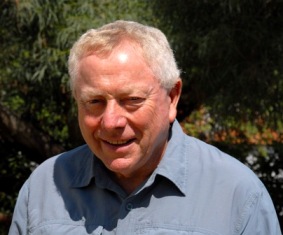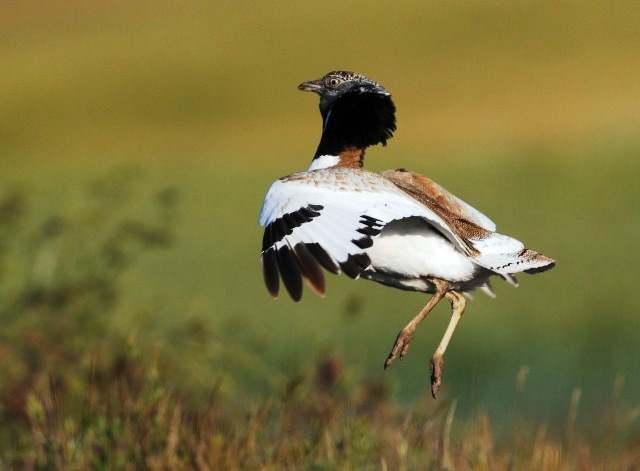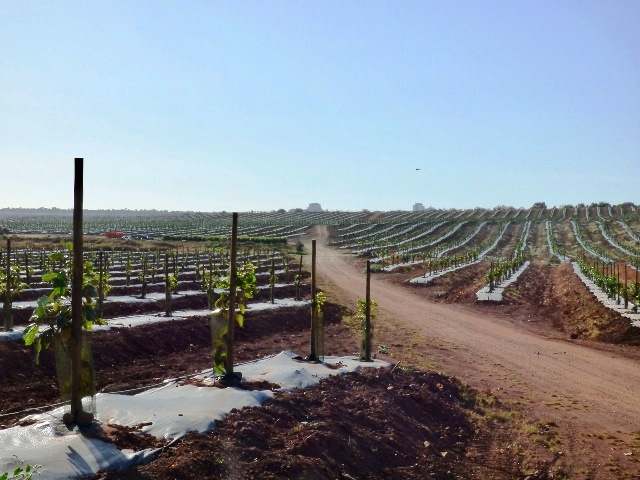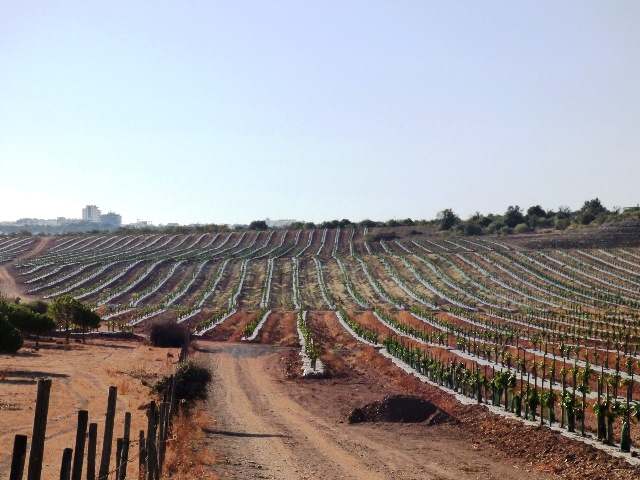Out with Papa-figos

Clive Viney - co-author of Algarve Wildlife - the natural year
Papa-figos (which literally translates as fig eater) is the Portuguese name for the Golden Oriole, one of the iconic visiting birds of the Algarve. Clive Viney is the co-author of Algarve Wildlife - the natural year, and now, under the guise of Papa-Figos, chronicles his finds, thoughts and feelings while walking in the Algarve countryside throughout the natural year. Look out for his regular updates, illustrated by his fellow co-author and photographer, Ray Tipper, who has kindly provided some of the photographs that illustrate these articles by clicking through from the links below.
How on earth was this allowed?
Reserva Natural do Sapal de Castro Marim e Vila Real de Santo António (simply known in English as Castro Marim Reserve) is a large protected wetland of well over 2000 hectares lying opposite Spain on the west side of the Rio Guadiana. The reserve was established in 1975 to protect the natural environment and landscape. This is an internationally important Ramsar Site. Habitat variety is good and includes productive and abandoned saltpans (salinas), salt marsh (sapal), tidal creeks, seasonally flooded pastureland and the tidal shore of the Guadiana. Enclosing and bisecting the wetlands are grassy hills, dry scrubland, farmland and orchards, which significantly increase the biodiversity of the reserve.
The heart of the reserve and the most productive component is the Salinas do Cerro do Bufo. This area comprises saltpans surrounded by tidal rivers, salt marsh, farmland, orchards and seasonal freshwater pastureland. This part of the reserve is situated within a large triangle with the historic town of Castro Marim at its apex.
An essential part of the Cerro do Bufo habitat was the low grassy hills that formed the western part of the reserve. On these hills in early summer pairs of rare Little Bustards bred. In winter a large post-breeding flock of Little Bustards occurred along with a good number of European Golden Plovers and Northern Lapwings. Large flocks of Skylarks and Corn Buntings graced the area and this was perhaps the best place in the Algarve to see Great Spotted Cuckoos that in spring followed Magpies, their host species. Common Ravens were regular and often a Peregrine Falcon or a Marsh Harrier terrified the birds. Iberian Hares were commonly seen. On passage, Tawny Pipits, Yellow Wagtails and Northern Wheatears passed through and in very cold winters I have seen both Fieldfares and Redwings there. But alas, this will happen no more.

A Displaying Little Bustard - Picture Ray Tipper: Licence enquiry...
On 21st September this year, I saw to my horror that these low grassy hills, well within the strict nature reserve, were no more. Quite incredibly they had been stripped bare, layered with plastic and a vast area of many hundreds of hectares had been covered with an avocado monoculture. The area was totally lifeless. I returned on 9th October to take photographs from an open track and although there were no private signs and I passed through no gates, a car sped to me and a young man said I was to leave and not take photographs. What was he trying to hide? Before us was a seemingly endless environmental desert.

Avocado Saplings
The new avocado saplings arise from plastic groundsheets and are treated with the poisonous herbicide glyphosate, which makes it even worse. The largest avocado plantation in Europe is at Barão de São João in the western Algarve and has been challenged environmentally and economically (see eco123.info online). Malaysia has its environmentally destructive oil palms and now Portugal has its avocados. I am not against the productive use of countryside that is of nominal environmental value and accept that like neighbouring Spain parts of Portugal will become nothing more than great swathes of barren monocultures but how could this happen in a reserva natural?

A completely sterile monoculture
This nature reserve is managed by the Instituto da Conservação da Natureza e da Forests (ICNF) whose officers are based in the Information and Exhibition Centre situated in the reserve. As is well known, this centre is nothing short of a disgrace. Although a relatively new building, it has never been maintained and the public are all but discouraged from entering. It is not open at the weekends, closes for long lunches and at other times a half-open sliding gate discourages all but the most curious from entry. All external signage is either unreadable or has fallen down and the few trails are either overgrown or difficult to follow. A birdwatching hide is permanently locked but would be of little use, as the area it faces has not been managed. There is a patrol vehicle but it never seems to leave the car park but this may be because to save the bother of patrolling huge areas of the reserve were made out of bounds. For example, there was no sound environmental reason for closing the outer track at Cerro do Bufo, which the operator seldom used and was happy to see birdwatchers enjoy their day out. In any event, it is now academic because that track just follows the sterile monoculture.

From Heaven to Hell
This monoculture must have been approved by ICNF. I hope that the jobsworth is pleased with himself or herself. Quite clearly this is a disgrace and the public deserve an explanation.
Papa Figos
9th October 2019
Back to Papa Figos...